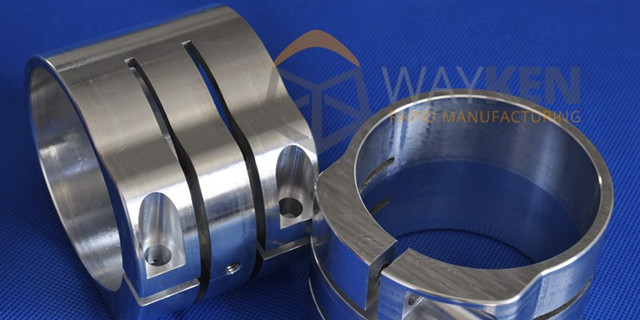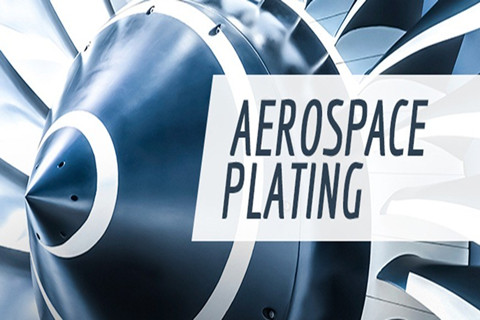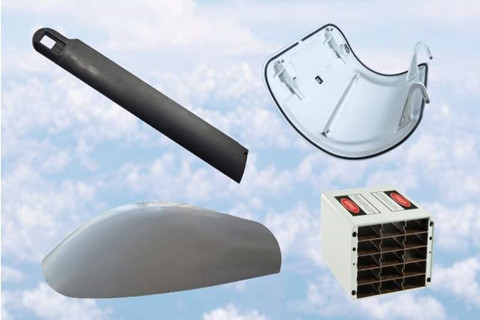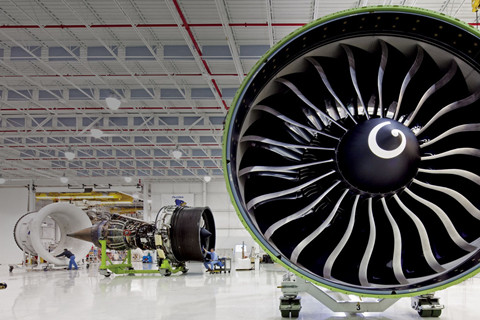Light alloys mainly refer to titanium alloys, magnesium alloys, and aluminum alloys. Among them, the titanium alloy is an alloy composed of other elements added on the basis of titanium. At room temperature, titanium alloys can be classified into the following three categories: alpha alloys, (α+β) alloys, and beta alloys. The α-titanium alloy has the best machinability, the α+β titanium alloy is the second, and the β-titanium alloy is the worst. The aluminum alloy is an alloy based on aluminum and is composed of other elements, which has been applied in the modern prototype machining industry, especially for aerospace. It can be divided into four series: aluminum-silicon. Aluminum-copper, aluminum-magnesium, and aluminum-zinc; magnesium alloy is an alloy based on magnesium, and the main alloying elements are aluminum, zinc, manganese, lanthanum, cerium and a small amount of zirconium or cadmium.
With the development of science and technology and the increasing frequency of aerospace activities, the trend of lightweighting has become mainstream in the aerospace rapid prototyping industry. New lightweight alloy materials with lightweight effects have become more and more widely used in the aerospace industry.
Aluminum Alloy
Aircraft need to have high transportation efficiency and good flight performance, thus requiring low structural density and excellent performance, namely high strength, high toughness, fatigue resistance, corrosion resistance, and high weldability. Because of all this, high-strength aluminum alloys use aluminum alloy as the main structural material. This paired with a quality aeroshell 33 grease can further reduce wear and tear in critical areas and keep components working optimally for longer.
Aluminum is a kind of material commonly applied in the prototype manufacturing industry. However, the amount of aluminum used varies depending on the application in the situation. Civil machines that focus on economic benefits are widely used because of the low price of aluminum alloys. For example, aluminum alloys used in the Boeing 767 aircraft account for about 81% of the weight of the structure. Military aircraft relatively reduce the amount of aluminum required for good combat performance. For example, the F-15 high-performance fighter with a maximum flight speed of Mach 2.5 uses only 35.5% aluminum alloy. Some aluminum alloys have good low-temperature properties. They are not cold-brittle under -183~-253[2oc]. They work in liquid hydrogen and liquid oxygen. They do not react chemically with concentrated nitric acid and dimethyl hydrazine. The welding properties are therefore a good material for making liquid rockets. The “Saturn” launching “Apollo” spacecraft No. 5 carrier rocket fuel tank, oxidizer tank, compartment section, interstage section, tail section, and instrument compartment are all made of aluminum alloy.
The shuttle’s passenger compartment, front fuselage, mid fuselage, rear fuselage, vertical tail, flaps, elevons, and horizontal tail are all made of aluminum alloy. The main structural materials of various artificial earth satellites and space probes are also aluminum alloys.
However, with the modification of aircraft or the emergence of new aircraft, aluminum alloy applications are challenged by materials such as composite materials and titanium alloys, and their usage is gradually reduced. For example, the amount of aluminum alloy on the Boeing 757 aircraft has decreased from 78% in 1980 to 62% in 1995, while the use of titanium alloys and composites has increased significantly. The structural selection of the recent Boeing 787 and Airbus A380 has also changed a lot. For example, the proportion of composite materials in the main body structure of Boeing 787 is as high as 50%, while the proportion of aluminum alloy is only about 20%. The A380 aircraft body structure uses a composite material ratio of about 25%, and aluminum alloy proportion accounts for 60%.
Magnesium Alloy
Magnesium alloy is the lightest metal structural material with a density of 1.75 to 1.85 g/cm2. Used in aircraft to reduce structural weight and for high-speed operation, it reduces inertia. Magnesium alloys have lower strength and elastic modulus than steel and aluminum alloys but have high specific strength and specific stiffness. In the same weight construction, magnesium alloys can achieve higher stiffness. Magnesium alloys have excellent damping properties and high shock and vibration absorbing capabilities, making them suitable for parts subjected to shock loads and vibration. Magnesium alloy has excellent cutting performance and is beneficial to the machining of parts.
In the field of aviation, magnesium alloys are widely used in the manufacture of important mechanical equipment parts on aircraft and missiles to reduce the quality of parts, improve the maneuverability of aircraft and reduce the launch cost of aircraft. Germany first produced and used magnesium alloys containing aluminum on aircraft. Magnesium alloys have high vibration resistance, can absorb large energy under impact load, and have good heat absorption properties, so they are ideal materials for manufacturing aircraft wheels. Magnesium alloys are stable in gasoline, kerosene and lubricating oils. They are suitable for the manufacture of engine gears, oil pumps and oil pipes. They are also used to make rocker arms and flaps due to the low inertial forces generated during rotation and reciprocating motion. Moving parts such as hatches and rudder surfaces. Magnesium alloy products are widely used in civil aircraft and military aircraft, especially bombers. For example, the fuselage part of the B-52 bomber uses 635 kg of magnesium alloy sheet, 90 kg of extrusion and more than 200 kg of casting. With the rapid development of technology, magnesium alloys have been gradually promoted and applied in products such as attack aircraft, helicopters, and missiles. For example: ZM6 cast magnesium alloy has been used to manufacture important parts such as helicopter tail reducer 歼, sniper’s rib, and 30kW generator rotor lead platen; MB25 rare earth high-strength magnesium alloy has replaced some medium-strength aluminum alloy, and it has been applied on the attack machine.
Titanium Alloy
In 1948, DuPont of the United States used magnesium to produce titanium sponge in tons. This marked the beginning of industrial production of titanium sponge, titanium. Titanium alloys are widely used in various fields due to their high specific strength, good corrosion resistance, and high heat resistance. Titanium is abundant in the earth’s crust, and its content ranks ninth, much higher than common metals such as copper, zinc, and tin. Titanium is widely found in many rocks, especially in sand and clay.
Titanium alloys are mainly used in the manufacture of aircraft and engines, such as forged titanium fans, compressor discs and blades, hoods, exhausts and other structural components such as aircraft beam frame. The use of titanium alloy instead of stainless steel to manufacture high-pressure compressor discs and blades can reduce the structural weight. In recent years, scientists have made new progress in the research on the performance of titanium alloys. The original titanium alloy consisting of titanium, aluminum and vanadium have a maximum working temperature of 550 ° C to 600 ° C. The newly developed titanium aluminum (TiAl) alloy has a maximum operating temperature of 1040 ° C.
Titanium alloys for aviation account for half of the application of titanium alloys. From a global perspective, the consumption of titanium alloys and titanium products are mainly concentrated in the aviation industry aerospace rapid prototyping and industrial fields.






